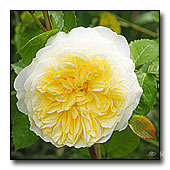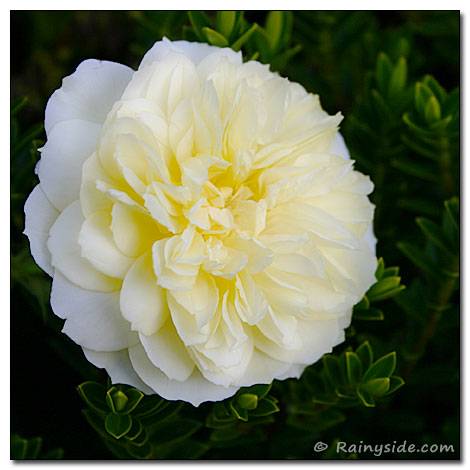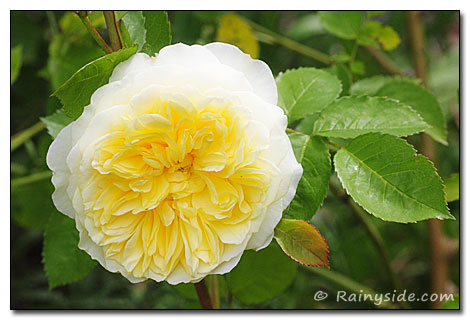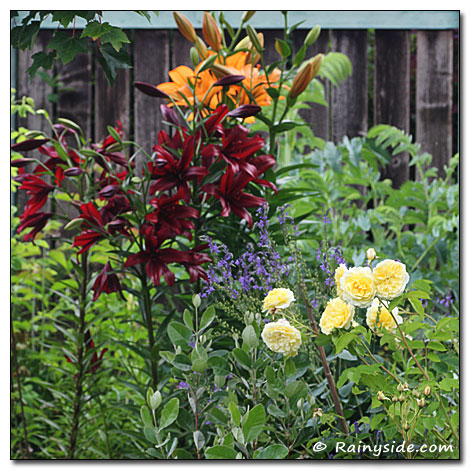Rosa 'The Pilgrim'
ENGLISH ROSE
syn. R. 'Gartenarchitekt Gunther Schulze', R. 'Pilgrim'
Family: Rosaceae
Pronounced: RO-sa

Quick Jumps
Growing Guide
Rainy Side Notes
GROWING GUIDE

Origin:
Garden.
Plant Group:
Shrubs.
Hardiness:
Sunset zones: All.
USDA zones: 5-10.
Heat zones: 9-5.
Mature size:
Height: 5 feet (1.5 m). (In warmer climates it may reach 6-9 feet.)
Width: 3 ½ feet (1.5 m).
Flowering period:
June.
Flowering attributes:
Flat and quartered, four-inch wide flowers, with 60 or more petals, are a soft, clear yellow in the center and outer petals fade to white.
Leaf attributes:
Shiny, green leaves.
Growth habit:
Upright shrub.
Light:
Full sun.
Soil:
Fertile, humus rich, well-drained soil.
Feeding:
Once a month with a complete organic fertilizer during growing season.
Propagation Methods:
Softwood cuttings in spring.
Hardwood cuttings in autumn.
Layer stems.
Pruning Methods:
After flush of blooms (normally 2-3 flushes in a season), prune to promote new growth and more flowers.
Rainy Side Notes


"A Rose as good as 'The Pilgrim' is an all too rare reminder that the many years of work are worth it in the end." -David Austin
In 1991, David Austin introduced Rosa 'The Pilgrim', a cross between R. 'Graham Thomas' and R. 'Yellow Button'. The soft yellow flower is a welcome change over many of the garish yellow hues offered in roses. It's great as a cut flower; sometimes a stem will have enough flowers to be a bouquet in itself.
This tough, robust shrub has many virtues that make it a nominee for the perfect rose in the maritime Pacific Northwest. Many of the qualities I look for in a rose for my organic garden are found in this English rose--continuous blooms (three flushes), disease resistance, vigorous, and fragrant, beautiful flowers. This rose seems to laugh off any hints of black spot on its foliage.
Integrate this shrub in the mixed border, by planting three together in a triangle for a full lush look. In hotter climates it will behave more like a climber; in our cool climate it grows like a shrub rose. I recommend buying roses that are not grafted. However, grown on its own roots, it will take a while longer to become established. By the third year, it should be growing vigorously.
A Pacific Northwest
Plant of the Week (2013)
Photographed in author's garden.

Gardening for the Homebrewer: Grow and Process Plants for Making Beer, Wine, Gruit, Cider, Perry, and More
By co-authors Debbie Teashon (Rainy Side Gardeners) and Wendy Tweton

